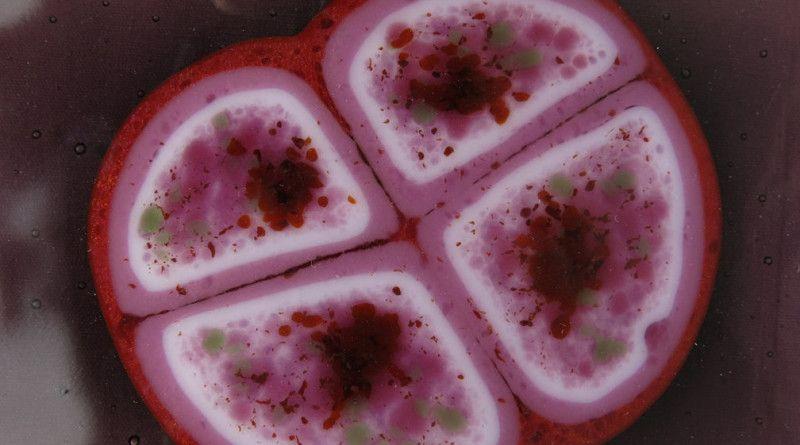Radiation resistance of microbes is a key parameter in considering survivability of microbes over geologic times on the frigid, arid surface of Mars that is bombarded by solar and galactic cosmic radiation. In a previous study, Professor Michael Daly from the Uniformed Services University of the Health Sciences, and colleagues found that Deinococcus radiodurans, a species of bacterium with an extraordinary resistance to the lethal and mutagenic effects of ionizing radiation, could survive over a million years in Mars’ harsh ionizing radiation. Their new study shatters that record, finding Deinococcus radiodurans could survive 280 million years if buried; this means evidence of ancient bacterial life could still be dormant below the Martian surface.

If in fact there is or has been life on Mars, it would likely still be there today, billions of years later. Image credit: M. Kornmesser / ESO.
Evidence for persistent liquid water on ancient Mars and significant amounts of contemporary water ice, along with the planet’s proximity to Earth, have made Mars a target in the search for existing or extinct extraterrestrial life.
In addition to the growing number of national space agencies undertaking Mars exploration, private-sector enterprises are engaged in activities designed to enable manned missions.
The search for evidence of past or present Martian life is evolving to include sample return operations.
The atmospheric pressure on Mars (600 Pa) is less than 1% that of Earth (100 kPa), and the atmosphere is so dry as to be highly desiccating.
Life as it is understood is based on aqueous chemical reactions; liquid water is the solvent for life, and desiccation alone will prevent cell proliferation.
However, under conditions of desiccation, many unicellular and even some multicellular organisms can enter a state of dormancy, in which intracellular water is lost and metabolism is undetectable, yet can resume activity upon aquation.
In continuously frozen Martian environments at depths greater than 10 m, the viability of dormant life would be limited only by the effects of background radiation, which is likely to be the same as on Earth, and thus could allow a prolonged continuation of dormant life at such depths.

To explore whether or not life could survive in these conditions, Professor Daly and co-authors first determined the ionizing radiation survival limits of microbial life.
Then, they exposed six types of Earthling bacteria and fungi to a simulated Martian surface and zapped them with gamma rays or protons (to mimic radiation in space).
“There is no flowing water or significant water in the Martian atmosphere, so cells and spores would dry out,” said Northwestern University’s Professor Brian Hoffman.

Deinococcus radiodurans
Taken by: Wikimedia Commons
“It also is known that the surface temperature on Mars is roughly similar to dry ice, so it is indeed deeply frozen.”
Ultimately, the researchers determined that some terrestrial microorganisms potentially could survive on Mars over geologic timescales of hundreds of millions of years.
In fact, they discovered that Deinococcus radiodurans is particularly well-suited to surviving Mars’ harsh conditions.
This species survived astronomical amounts of radiation in the freezing, arid environment — far outlasting Bacillus spores, which can survive on Earth for millions of years.
“Although Deinococcus radiodurans buried in the Martian subsurface could not survive dormant for the estimated 2 to 2.5 billion years since flowing water disappeared on Mars, such Martian environments are regularly altered and melted by meteorite impacts,” Professor Daly said.

A tetrad of D. radiodurans
Scientific classification
Domain:Bacteria
Phylum:Deinococcota
Class:Deinococci
Order:Deinococcales
Family:Deinococcaceae
Genus:Deinococcus
Species:D. radiodurans
Binomial name
Deinococcus radiodurans
Brooks & Murray, 1981
“We suggest that periodic melting could allow intermittent repopulation and dispersal.”
“Also, if Martian life ever existed, even if viable lifeforms are not now present on Mars, their macromolecules and viruses would survive much, much longer.”
“That strengthens the probability that, if life ever evolved on Mars, this will be revealed in future missions.”
The research is described in a paper in the journal Astrobiology.
Source: SCI News.








